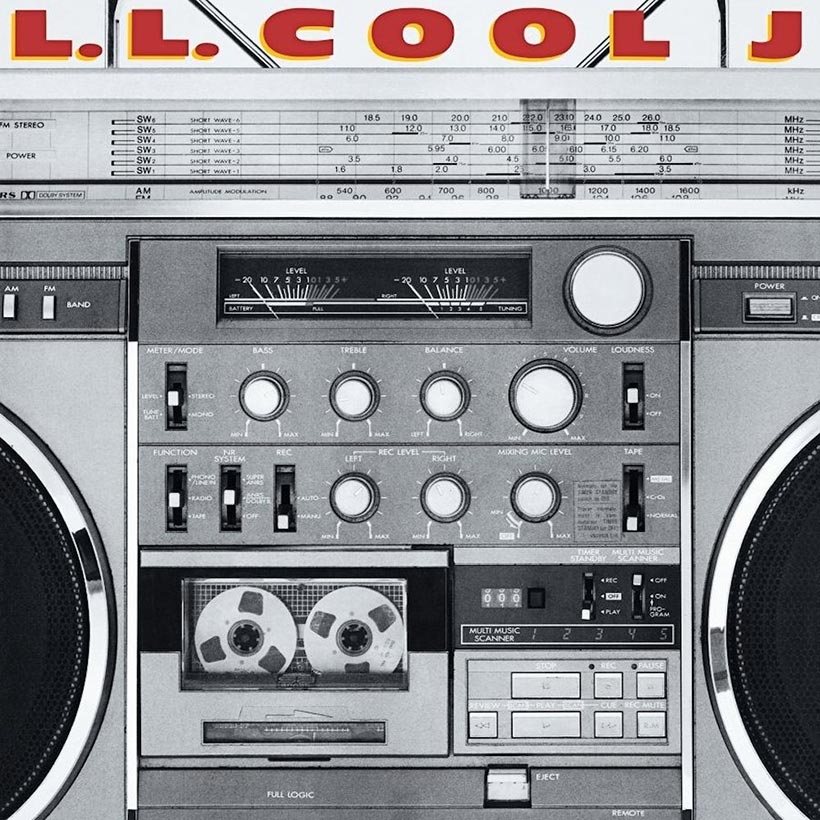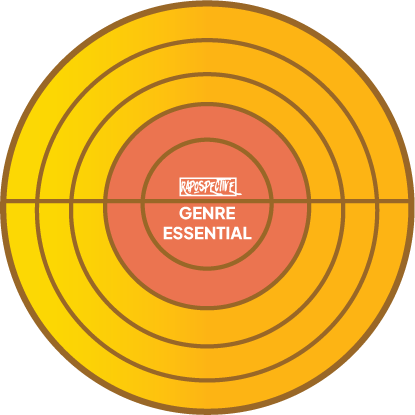

LL Cool J might forever be the best exemplification of longevity in the notoriously fickle hip hop genre. On September 6th, 2024, LL Cool J released The FORCE, his fourteenth studio album. What’s primarily significant about The FORCE is that it makes LL the only high-profile solo rapper so far to have had albums out in every decade since the 1980s. You’re not going to get any of his peers this active at this point in their careers.
What’s so infrequently pointed out, however, is that part of LL’s career endurance is due to him starting so young. The man born as James Todd Smith was only seventeen years old when he released his first album, Radio. Now, this is not to take away from his achievements, not in the least. After all, if his debut was not a critical and commercial success, who knows what might have befallen Def Jam Recordings—the young label founded by Russel Simmons and Rick Rubin in 1984—being that it was the label’s first album release? Off the strength of his self-produced demos, LL Cool J became the first artist to be signed to the fledgling company, in the same year it was founded. Later that year, LL’s first single, “I Need a Beat,” was somewhat of an underground hit. Moving over 100,000 copies, “I Need a Beat” helped Def Jam with its first breakthrough: securing a distribution deal with Columbia Records in 1985. That year, LL had a second single, “I Want You/Dangerous”: one song for the ladies, the other song for the fellas.
But LL Cool J was yet to have a music video ahead of the album he and Def Jam were putting together. A golden opportunity came with the filming of Krush Groove, a movie loosely based on the founding of Def Jam. LL briefly appears in the film to perform his next single, “I Can’t Live Without My Radio.” With this brilliant—and unconventional—promotional tactic, the anticipation was set for the debut album, which was released on December 18th, 1985, less than two months after Krush Groove hit theatres. Radio didn’t disappoint. An album comprising some of the most ravenous lyrics and edgiest beats ever heard in rap music, it symbolizes the birth of a new star—indeed, one of rap’s legends.
LL Cool J sure did a good job belying his moniker, Ladies Love Cool James. Sure, there are two numbers for the ladies: “I Can Give You More” and “I Want You.” But they are rudimentary rather than fully developed pieces, the sparseness of the lone drum machines creating a jarring contrast with the sentimental rhymes. Rather, LL’s tour de force in Radio is the hardcore, braggadocio numbers: the cuts that would form the dichotomy of his image for the early half of his career (and would become a weaker feature in the latter half). For example, “Dangerous” could not be any more aptly titled, as LL simply ravages the mic with one blistering line after the other. And in “I Need a Beat” (at least a chopped version of it), LL’s razor-sharp rhymes are given even more of an edge as his DJ, Cut Creator, cuts and scratches his words over the austere drum machine-driven track.
But it’s “Rock the Bells” that takes his braggadocio to another level. Starting it off with those legendary words…
L-L-Cool-J-is-hard-as-hell!
…the hyper teenager dazzles with prototypical internal rhyming. “The bass is kickin’ always stickin’ ‘cause you like it that way / You think it’s fresh and plus it’s def and ‘cause it’s by Cool J!” However, LL’s challenger stance—as the champion of an upstart genre—against more popular stars and well-established musical styles also grabs the attention:
The bells are whippin' and rippin' at your body and soul
Why do you like Cool J? (It ain't rock and roll!)
Cause it ain't the glory days with Bruce Springsteen
I'm not a virgin, so I know I'll make Madonna scream
You hated Michael and Prince all the way, ever since
If their beats were made of meat, then they would have to be mince
Rock the bells!
With just three couplets, hip-hop, personified in this precocious and audacious teenager, announced its arrival and call for recognition. It was new, it was edgy, it was raw, and it was here to conquer the entire music world.
And that encapsulates the beauty of Radio: the intense love LL Cool J has for hip-hop. A dedicated B-boy, you can even feel the fun he’s having as he delivers his lyrics, most notably in the freestyle acapella that emerges at the end of “Dangerous,” also known as “EL Shabazz.” In fact, right at the beginning, he pens and performs a love song to one of the early symbols of hip-hop music: the boom box. You know, the “ghetto blaster,” those humongous rectangular chunks of metal held up on one’s shoulder and blasts music at extremely high volumes, like as if the entire world beyond the slums needs to hear this “strange” sound born out of the Bronx. LL sure thought so, as he shows why he can’t live without his radio:
My radio, believe me, I like it loud
I'm the man with a box that can rock the crowd
Walking down the street, to the hardcore beat
While my JVC vibrates the concrete
I'm sorry if you can't understand
But I need a radio inside my hand
Don't mean to offend other citizens
But I kick my volume way past 10
LL is a fireball of energy in Radio, often screaming his lyrics and drawing out syllables for maximum listening effect and bombing the ears with unbridled egotistical bars. Thus, it can easily turn to venom, as it turns out in “Dear Yvette” where he thoroughly disses a promiscuous woman with a reputation so bad that, according to him, the Reverend said [she] was barred from coming to church. Funny enough, some little-known femcee from Philly called E-Vette Money—undoubtedly trying to raise her profile, especially considering the answer records inspired by UTFO’s “Roxanne Roxanne” in 1984—released “E-Vette’s Revenge,” you know, like Roxanne Shante’s “Roxanne’s Revenge.” E-Vette Money became the first rapper to verbally attack LL Cool J. And obviously, she would be far from the last one.
But enough of the footnote. Back to LL.
From beginning to end, there’s a rawness in Radio that’s expected from a young and hungry emcee glad to have been granted this opportunity to showcase his immense talents. And Rick Rubin, here on deck for production duties, hardly disappoints with his work. On the back of the album jacket are the words: Reduced by Rick Rubin. That’s right, not produced—reduced. Yeah, there is a guitar riff here and some bell sounds there. But all ten songs are mainly composed of hard-hitting drum machines, the pairing with LL’s ferocious rhyming creating an atmosphere of starkness yet to be paralleled in rap music history. It’s truly minimalism galore.
However, the sound is not without its disadvantages. For one thing, the stripped-down music is not as effective for the novelty numbers, like when LL ridicules a person who ain’t got no rhythm in “You Can’t Dance” or when he jokingly refuses to believe that Russell Simmons is as rich as he claims he is in “That’s a Lie”. And the love ballads, “I Can Give You More” and “I Want You,” fare a little worse, making the lyrics sounding a little mawkish over the plain production. Secondly, the production does feel a little monotonous due to no significant change in the instruments. The weaker songs particularly suffer the most, as a song like “You’ll Rock” would most likely not make you do so. And lastly, just like Run-D.M.C.’s debut, it would sound primitive to “modern” ears when played due to its extreme minimalism.
But ultimately, Radio is a powerful debut from LL Cool J, an indelible document that perhaps chronicled the B-boy spirit better than any record released since. As Radio went gold within six months of its release, then eventually platinum, and successfully launched the soon-to-be legendary label, LL became Def Jam’s flagship star and jumpstarted his career in a major way in the world of music. And he would only get bigger and deffer from that point on.
